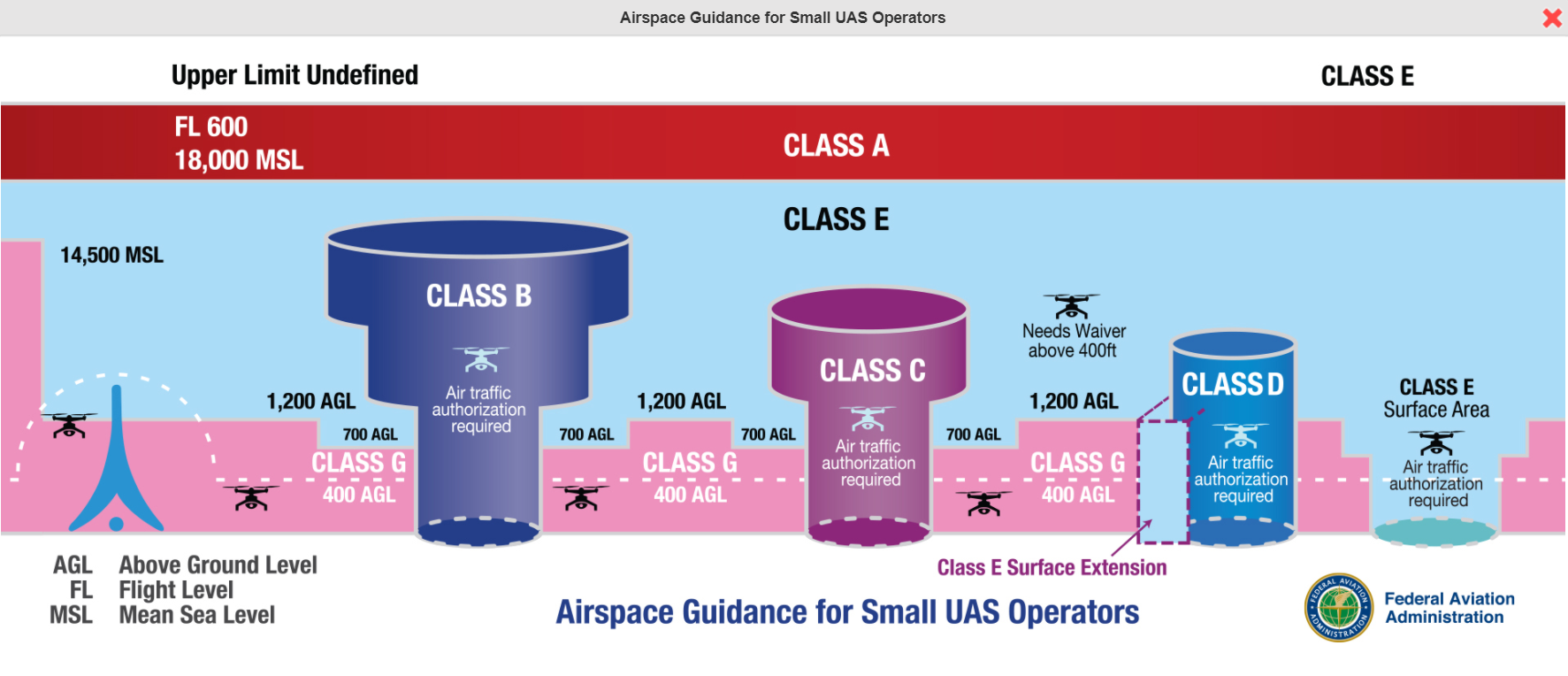Understanding Airspace
What you need to know about US Airspace
Example Aeronautical Chart
What are the types of Airspace?
There are Class A, B, C, D, E and G airspaces, which are intended to maintain order in the sky. Airspaces are broken into different lanes in a similar fashion to how road lanes are created to direct cars.
Why do I need to care what Airspace I am in?
Each type of Airspace has its own potential restrictions. In addition to the regular Part 107 Requirements. Most of the Airspace in the US is Class G, which has NO requirements other than the regular Part 107 Requirements. All other Airspaces will require some form of FAA authorization before flying at that location.
Apps to the rescue!
Just like most things today - there is an app for that! There are several apps available that help identify the Airspace. We recommend using Airmap, it makes understanding airspace a breeze. We highly recommend taking a look at the applications out there that make airspace and flight planning a simple process. [Airmap]
(https://www.airmap.com/)
Airspace Infographic from the FAA:
Woah! At first this may seem overwhelming. When you understand the basics, it all comes together. Plus, there are plenty of Android and iOS and Desktop options for software that makes understanding and applying for airspace approval a breeze.

The far left side of the image, where the dotted line goes over the tower, shows a clever way to navigate different airspaces. Here you can fly within 100’ from a structure, and still remain compliant (albeit into Authorize Airspace) going above 400’.
If you plan on flying in an area with no automatic authorization, and there is no phone number listed in Airmap, please use SkyVector, which is more in-depth since it includes the aeronautical charts and a list of airports with detailed information on each airport. Best practice is to call the airport manager first before calling the tower directly. Contact info can be found in the airport chart supplement and ownership info. Please see this example.
Updated 18 days ago
